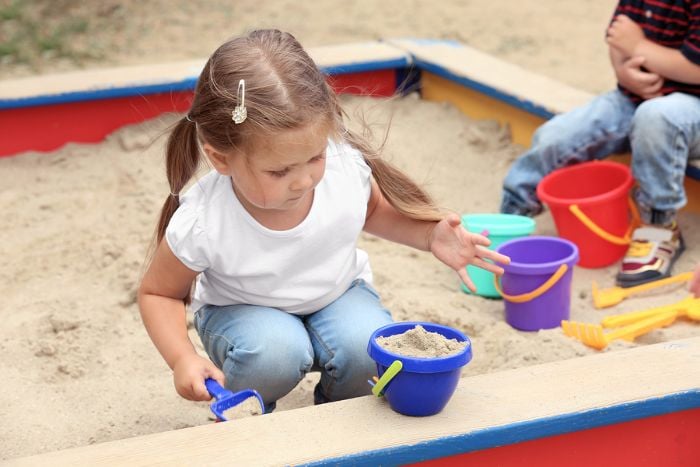Sand Play is an integral part of the early learning journey. Children’s instinct to learn through play is at its peak in a sandpit. When Maria enrolled her daughter Bryony into the Tarneit Explorers Early Learning centre after finding it on the Space childcare directory, she was impressed at how much attention was paid to sand play in the learning programme.
As children play in the sand, they discover how aspects of the world around them works, how it was created and how it can be manipulated, all the while exploring and having fun. IN fact, the humble sandbox is a centre of mathematical and scientific learning including fractions, conservation, geology and physics. Here are seven reasons sand play is an important element of all childcare programmes.
Table of Contents
1. Fine And Gross Motor Skills
In the sandpit children discover how sand moves, feels, how it can be used to make shapes and how it interacts with water. As they handle implements and tools to interact with the sand they use their fine and gross motor skills to do so, important skills for writing, drawing and movement.
2. Eye-Hand Coordination
As children manipulate toy machinery and spades, empty buckets and decorate sandcastles with twigs or shells the activities help develop eye-hand coordination skills. This is an important skill which they use for movement, sport and physical exercise or riding a bike.
3. Co-Operation
The limited size of the sandpit and the finite pieces of equipment encourage the children to work together to share space and equipment. Taking turns is essential for cooperative play. Children also quickly learn how to play considerately to avoid sand in eyes and hair.

4. Geology
Sandpits mixed with water can demonstrate how the earth’s surface was formed. As water is poured, it creates rivers and river veins, in the same way rivers and creeks are created in real life. Children build mountains out of sand which erode with wind and disruption, in the same way actual mountains and hills erode over time.
5. Construction
Explorers Early Learning Tarneit ensure the centre sandpit is well equipped with diggers, loaders, dump trucks and other construction toys. The children learn how the equipment works, gain mechanical knowledge and use teamwork to move the sand from one place to another.
6. Geometry and Conservation
Spoons, shovels and buckets all help the children discover important geometrical concepts like volume, weight and conservation as they fill, transfer and empty the tools. Making sandcastles with the buckets also teaches form, size, shape and balance.
7. Language
Teacher-led activities bring all the above lessons together, introducing important vocabulary for toddlers such as large, small, bigger, smaller, heavy, light and more complex concepts for preschoolers on their way to big school.
Playing with sand offers children the chance to engage with nature, learn important social skills while at the same time discovering foundational concepts about how the world around them. For Maria, this was worth Bryony’s sand filled trainers at the end of the day.


/cdn.vox-cdn.com/uploads/chorus_image/image/46933046/parenting.0.0.jpg)

